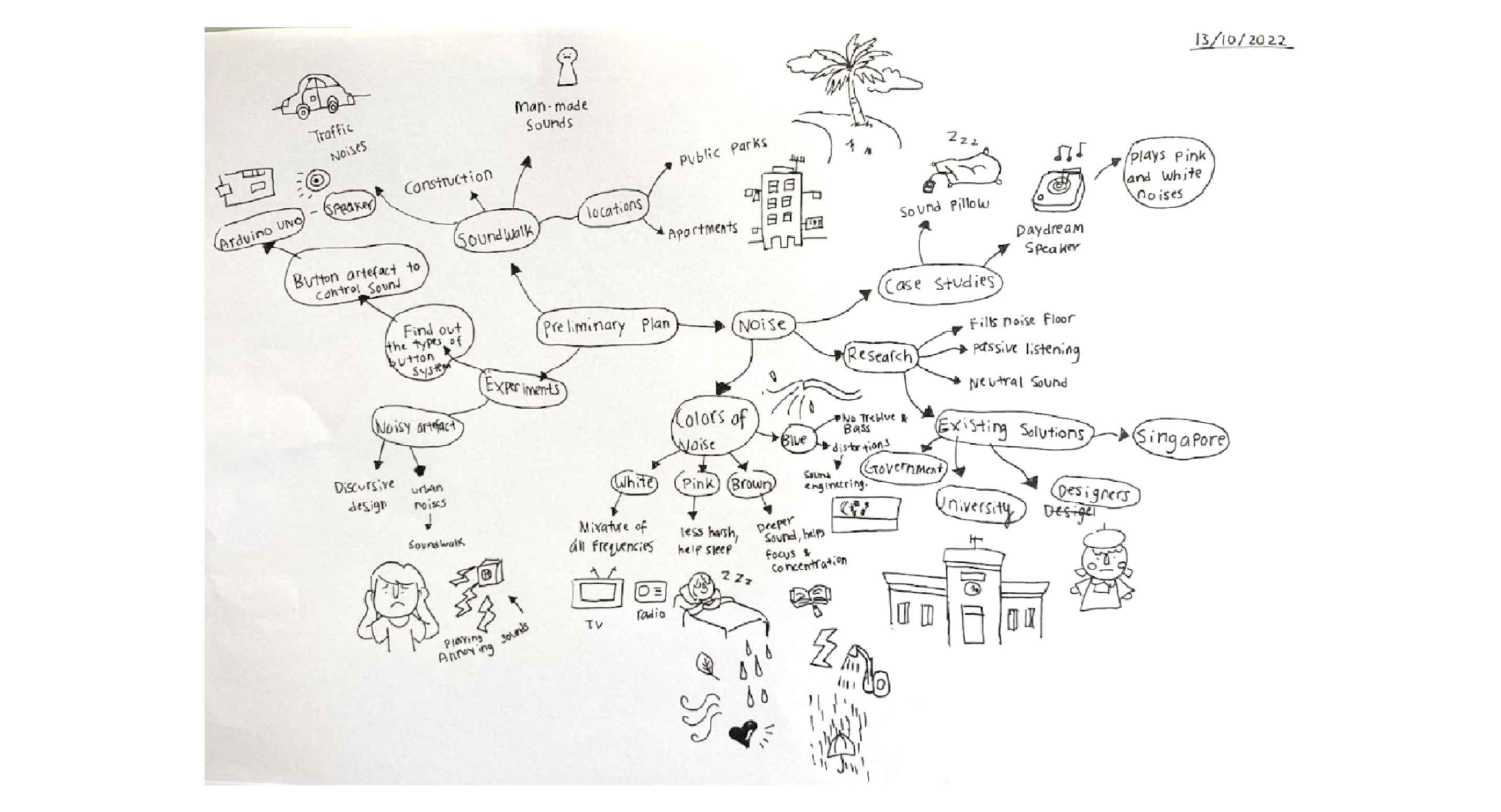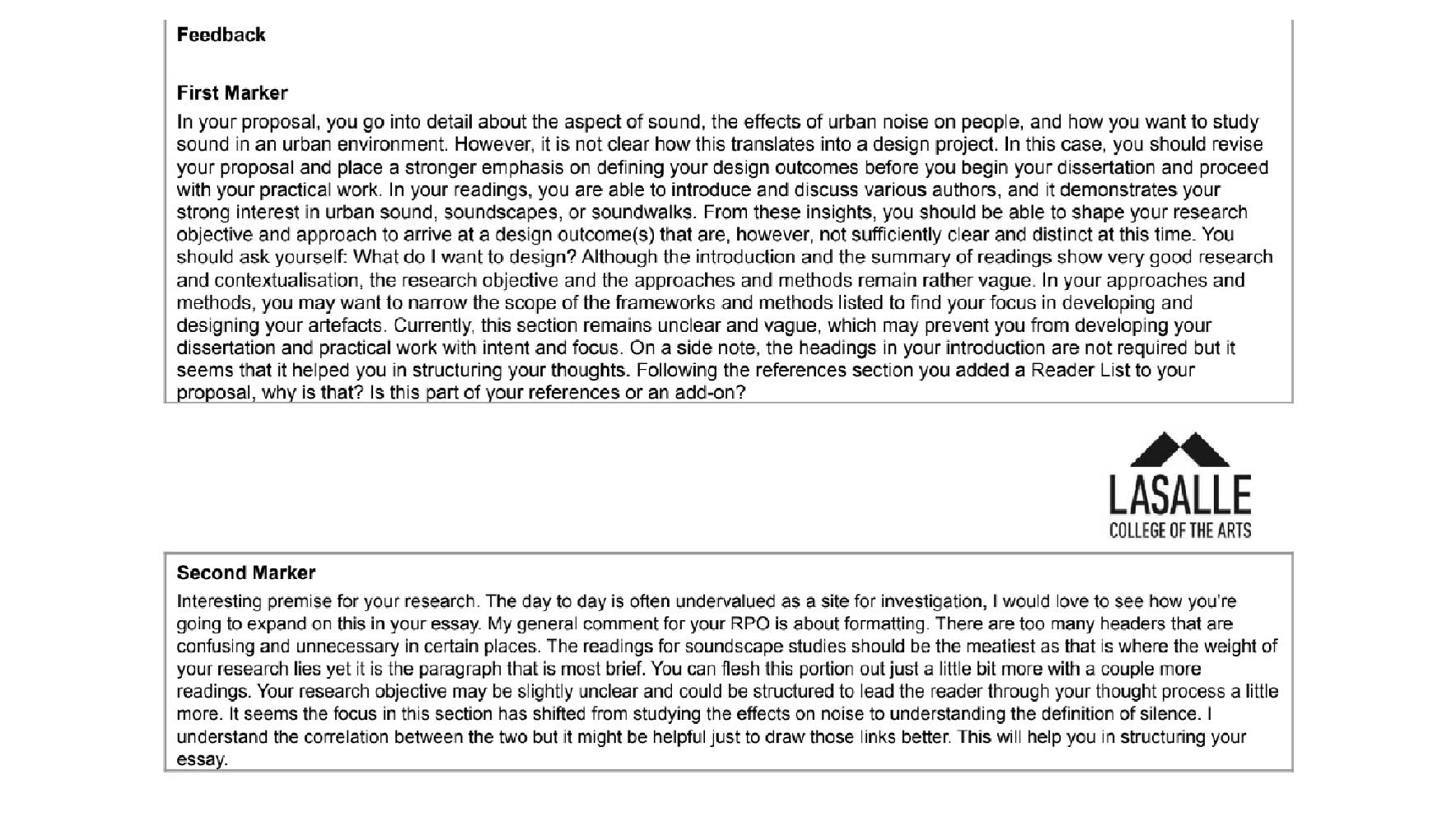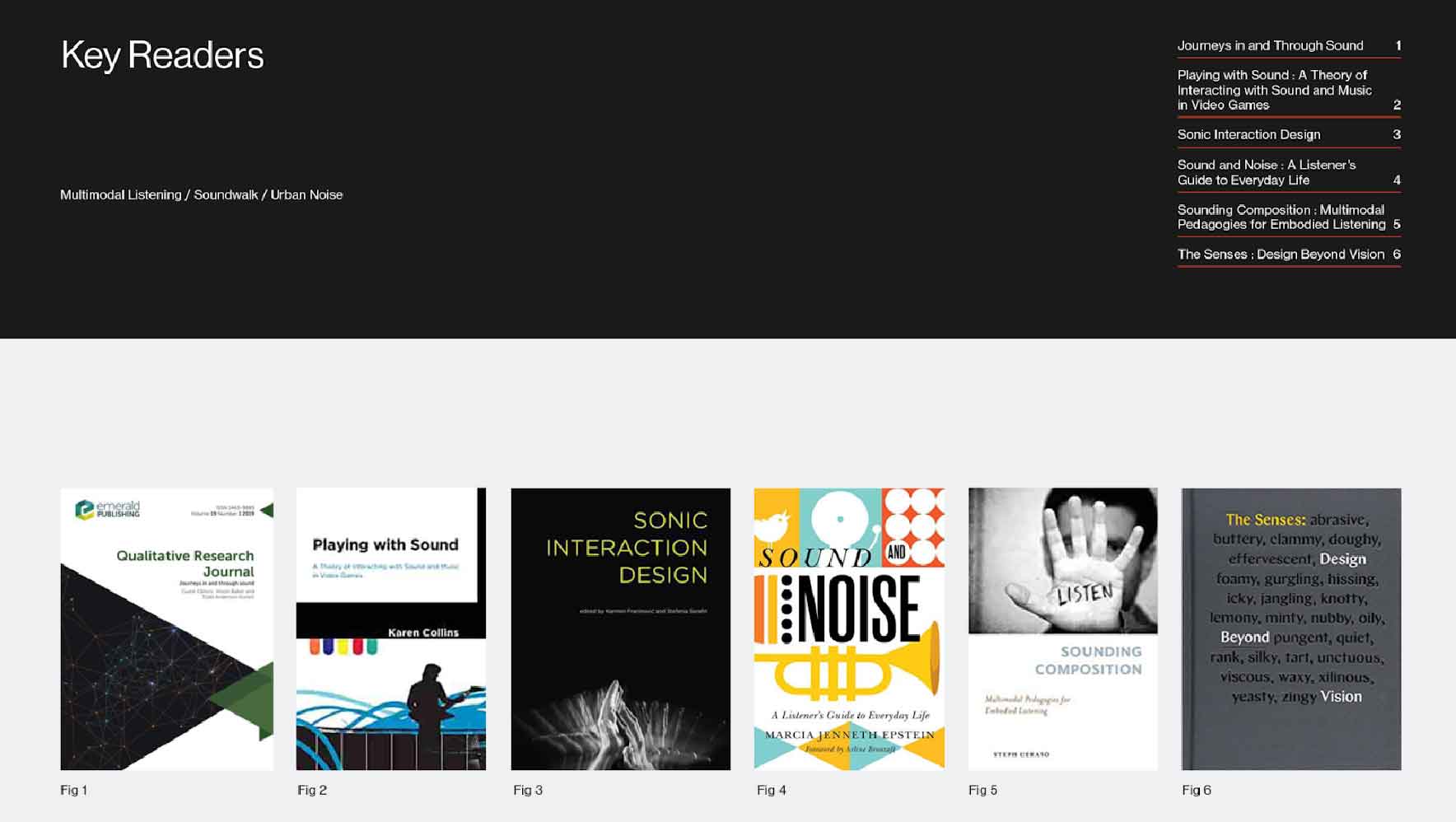Semester 01 Ubiquitous Nuisance Research Topic
Introduction
The use of soundwalks to understand our soundscapes is examined in this study. According to R. Murray Schafer, author of 'The Soundscape: Our Environment and the Tuning of the World', the Industrial Revolution adversely affected our sonic environment. With the increased artificial sounds created by machines, our sonic environment has become overcrowded, reducing our ability to hear clearly (Franinovi et al. 7-8).
Theoretical concepts
With the soundwalk practice, you can explore the
environment as you explore it with the intention
of active listening. As you move through the
space, you will understand and remember the
sounds that you may have missed about the sonic
environment (Schine).
Objectives or purposes of research
My research aims to identify the specific
experiences we experience when we interact with
sound, and to examine how these experiences
differ from the experiences we have with other
sensory inputs like sight, touch, and smell and
how artists, designers, and researchers design,
structure, and compose these interactions.
Moreover, I am interested in investigating
whether the growing use of portable acoustic
devices, including smartphones and media
players, can be used as a means of creating our
own personal soundscapes we may be able to
control, as urban noises from the outside have
no control over us? How do we respond to nature,
culture, physiology, and psychology?
What I expect to discover from this research
What are the conditions in which urban noise is
not simply a nuisance, but a clue to
understanding what conditions our sonic
environment is in, how we can limit the harmful
effects of urban noise, what might our future
sound like if we gave urban noise issues the
appropriate attention needed, and why some
sounds are pleasing while others annoy us.
Preliminary planning for my new research
topic
Having created a mind map of topics that I wish
to study or experiment on, I felt that it would
be more effective and interesting if I created a
physical artefact for my project.
Reflection — Changing my research topic
After evaluating my previous research topic, I
felt that focusing on urban noises provided me
with more clarity. It was difficult for me to
relate memory to sound as it was too abstract
for me and I felt that the research was too
complicated and it might take me more than a
year to complete. I struggled with this concept.

Mind map of possible design approaches to take for my artefact
Public Parks
In regards to my research topic, I received some feedback from my classmates who thought my research aim was unclear when I explained it. Aditi told me that she tried mixing white noise with pink noise but did not succeed. As a result, I believed this might be an excellent opportunity to investigate the disconnection of noises as a method for creating an artefact that will bring awareness to sound pollution through irritating noises. As part of my research project, my lecturer recommended that I visit the Nafa exhibition 'Peel Here'.
- What are the non-commercial and non-direct ways?
- White and pink noise might be a worthwhile design approach.
- Will unfamiliar sounds mix well together?
- Could some of these noises that can't be mixed be beneficial in the case of a noisy artefact?
- How should the ideas be linked to sound pollution?
- Find a way of how sound pollution is reflected in the design approach?
In order to better understand my research topic and move on to prototyping, I discussed it with the lecturer again. The feedback was that because my field recordings were collected from so many locations; the recordings were difficult to analyse and felt quite random since the recordings were collected from so many locations. I and the lecturer determined that it would be more effective to concentrate on parks that are close to residential areas and those that are more secluded as a result of the discussion.
Research Proposal Outline Feedback
Animals as well as humans who share the same environment are adversely affected by noise pollution, also known as environmental noise or sound pollution. The majority of these noises are the result of overcrowded man-made sounds caused by various modes of transportation, construction sites, and heavy human traffic. 1 Due to our heavy dependence on machines, we have fewer opportunities to hear the natural soundscape as a result of our rapidly growing society. 2 As a consequence, we have created a soundscape with overcrowded sound signals that makes it difficult for us to focus and relax because of the urban noise pollution.
Due to feedback received regarding my research proposal outline, I made some updates to my dissertation.
1 R. Murray Schafer, author of 'The Soundscape: Our Environment and the Tuning of the World', argues that our sonic environment is affected negatively because of the Industrial Revolution (Franinović et al. 7).
2 The increased artificial sounds from machines have turned our sonic environment into one that has overcrowded sound signals, making it harder for sonic clarity (Franinović et al. 8).

Feedback given by two markers 
I will organise my readers using the sub-headers, Multimodal Listening, Soundwalk and Urban Noise. I have removed the soundscape heading because the term was too general.
Research Objectives
To understand the social aspects and impacts of urban noise, I will use acoustic ecology and soundwalks. The primary objective of this project is to assist people in understanding how they can reduce the negative effects of urban noise on the local soundscapes in their neighbourhoods. A soundwalk is being conducted in Singapore parks in order to learn more about the urban noises that can be found there. In order to understand the differences between parks located near residential areas and those located more secluded, I intend to compare them. As a designer, I intend to use my collected recordings to create a design artefact that raises awareness of urban noise pollution and inspires people to imagine what a better future might sound like if urban noise issues were given the attention they deserve.
- Is the increased use of portable acoustic devices such as smartphones and media players an attempt to create our own personal soundscape that we can control because we have no control over outside noises?
- What are the conditions under which urban noise is more than just a nuisance, but a clue to understanding the state of our sonic environment?
The research methods that I am using are still unclear to me, and I will need to continue to work on this section. I am currently conducting field research using soundwalks to observe urban noises within Singapore park soundscapes. To understand the issues surrounding urban noise pollution, I will use discursive design as a method to design an artefact that will evoke emotions and communicate these issues to the public. 3
3 Discursive design seeks to evoke emotions through design artefacts with the main purpose of communicating an idea to your users. This design approach may not be for the commercial market because the main focus is set for users to think about personal or social issues (Yip).
Discussion
As I do not have adequate materials to perform the prototyping part, I have not been able to work on this section much. I will visit parks in Singapore at two fixed times, the afternoon between 12 pm and 1 pm and the evening between 5 pm and 6 pm. It is my intention to visit each chosen park twice, once during the week and once at the weekend, in order to compare the amount of human traffic and the amount of man-made noise. I will keep a journal of what sounds were heard during the experiment.
- Selecting a mix of residential and secluded parks in Singapore.
- Conducting a soundwalks from 12 pm to 1 pm and 5 pm to 6 pm on a weekday and weekend for each park location.
- Journaling method for keeping record of the types of urban noises heard.
- Analysing field recordings — noise floor readings from adobe audition.
- Research the different types of interactive structures for my artefact.
Gift of the Gab: Interactive Sculpture
By Xavier Sole Mora
It was interesting that the artist used candy
head dispensers to represent birds. He created a
symphony of bird sounds with the artefacts, and
the buttons were produced by electric paint
sensors. For my design artefact, I was
considering the possibility of playing man-made
urban sounds instead. I thought that would be an
interesting concept.
The Gift of the Gab is based on the etching called “Qué pico de oro!” (What a golden beak: The gift of the gab). It is a smokescreen containing a bunch of babbling parrots, which is intended to distract the viewer's attention from what takes place behind the scenes, where concealed characters guard the wires and mechanisms of the sculpture.
To trigger sound and move the servo parts, conductive buttons were used. Electric Paint acted as a capacitive sensor, and Arduino was used to drive the movement of the birds. Pure Data was used to generate the sounds.